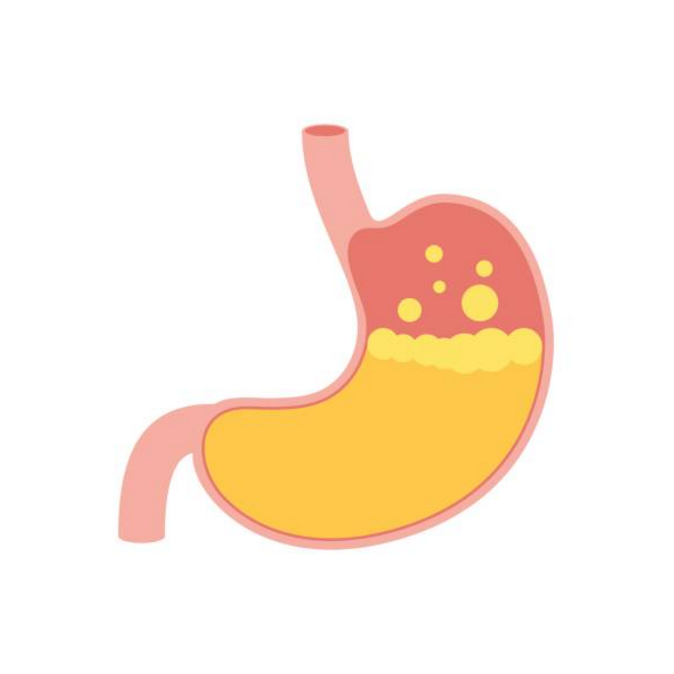General Information
Oesophageal dilatation is performed during Panendoscopy, and involves inserting an endoscope via the mouth to open up a narrowing of the oesophagus. Once the endoscope has reached the position of the narrowing, a dilating tube is inserted, allowing the gastroenterologist to expand the blocked oesophagus. This procedure is performed while the patient is sedated, minimizing discomfort.
Whilst oesophageal dilation helps to open the narrowing (stricture) and reduce the associated symptoms it does not treat the underlying condition that has caused the narrowing to develop. Your Gastroenterologist will discuss treatment options that may be useful for your underlying condition.
Indications
Oesophageal dilitation may be recommended by your doctor as a treatment option for narrowing of the oesophagus. Narrowing of the oesophagus can occur in conditions such as:
- Barrett’s oesophagus
- Gastro oesophageal reflux disease (GORD)
- Oesophageal cancer
- Dysphagia with narrowing
- Achalasia
- Hiatus hernia with narrowing
- Eosinophilic oesophagitis
Special Considerations
- Please alert the CDD staff if you are usually prescribed prophylactic antibiotics to cover you for dental procedures.
- If you are a diabetic or epileptic, please highlight this on your Patient Medical History Form, which can be downloaded from the following link: https://centrefordigestivediseases.com/wp-content/uploads/2017/10/CDD-Forms-Web.pdf. You will be contacted 2 working days prior to the procedure by the Nursing Staff at the Centre and given specific instructions on preparation.
- If you take blood thinning medications please ask your GP or prescribing doctor whether it is safe for you to stop these medications 7 days before your procedure date. If you cannot stop these medications safely, please ensure your paperwork is received 2 weeks in advance of your procedure date and you have highlight this information on your Patient Medical History Form, which can be downloaded from the following link: https://centrefordigestivediseases.com/wp-content/uploads/2017/10/CDD-Forms-Web.pdf.
Sedation
These procedures do not require a general anaesthetic. Instead, the Sedationist will administer intravenous sedation via a small needle through a vein at the back of the hand or in the arm. The injection is usually not painful. A numbing spray may also be applied to the back of the throat to minimize localized discomfort that may result from the Oesophageal Dilitation procedure.
Preparation
Panendoscopy and Oesophageal Dilitation: When having Oesophageal dilitation performed during a Panendoscopy, no bowel preparation is required. Instead, you will need to prepare for the procedure by fasting (no eating or drinking) for a minimum of 4 hours. More details on panendoscopy preparation can be obtained by clicking this link: https://centrefordigestivediseases.com/wp-content/uploads/2017/11/FM-110-gastroscopy-prep-form-for-website.pdf
Post Procedure Care
Please note the following important points after you have your procedures:
- You should not drive or operate heavy machinery for 12 hours following sedation
- Avoid alcohol for 12 hours following your procedures.
- Please advise the person picking you up that we prefer that somebody is with you when you are given the results of your procedures.
- When you go home, we recommend that a friend or relative stay with you so that you are not alone after sedation. Following sedation, you may experience light headedness and may have a higher risk of falls.
- You may experience temporary discomfort or bloat for up to 24 hours as air may remain in the stomach or bowel. This will usually resolve without intervention but may be helped by drinking warm fluids, massaging the stomach and passing wind.
- Monitor and report signs of bleeding.
Unless otherwise instructed by your gastroenterologist, after your procedures:
- You can resume your normal diet but as you may have a mild sore throat after the procedure, a soft diet may be better tolerated for the first few days after the procedure.
- Your doctor will instruct you as to when you can restart your blood thinning medications but all other medications can be restarted immediately unless otherwise instructed.
- You can return to work the next day.
Complications
These procedures are considered safe1 but complications or side effects may occur.
The intravenous injection given for sedation may cause a local reaction or bruising under the skin, but is usually not painful and should not cause permanent damage.
After having a panendoscopy, some patients may experience temporary discomfort or pain due to the introduction of air into the stomach or bowel. This will usually resolve without intervention in the days following the procedures.
The throat may be sprayed with a local anaesthetic agent to lessen the sensation of the endoscope when inserted or to numb the area that is dilated. The throat may feel numb for a short time after you procedures but will return to normal in a few hours.
Rarely, major complications can occur. Potential major complications include: perforation (or puncture) of the oesophagus, stomach or small bowel, haemorrhage (or bleeding) following removal of polyps or tear in the oesophagus, infection, or cardiac or respiratory arrest related to sedation/anaesthesia.
Major complications are rare and the staff at CDD are all well trained to deal with emergency situations. If you wish to discuss the potential risks or any issues regarding your procedure(s) in more detail, please speak with the gastroenterologist.
Contact Details
Please see the following link for CDD contact details during office hours, 9 – 5pm, Monday to Friday: https://centrefordigestivediseases.com/contact-us/. As the Centre is a Day Stay Unit only, if complications following procedure arise outside of business hours you should seek medical attention from either your GP or nearest hospital emergency department
Further Reading and References
Runge, T., Swathi, E., Cotton, C.C., Burk, C., Woosley, J., Shaheen, N. & Dellon, E. (2015). Safety and Efficacy of Esophageal Dilation in a Large Cohort of Patients with Eosinophilic Esophagitis. American Journal of Gastroenterology, 110: S729-S730.
Link to Publication: https://journals.lww.com/ajg/Fulltext/2015/10001/Safety_and_Efficacy_of_Esophageal_Dilation_in_a.1718.aspx
Egan, J.V., Baron, T.H., Adler, D.G., Davila, R., Faigel, D.O., Gan, S., Hirota, W.K., Leighton, J.A., Lichtenstein, D., Qureshi, W.A., Rajan, E., Shen, B., Zucherman, M.J., Van Guilder, T. & Fanelli, R.D. (2006). Esophageal dilation. Gastrointestinal Endoscopy, 63(6): P755-760. Doi: 10.1016/j.gie.2006.02.031
Link to Publication: https://www.giejournal.org/article/S0016-5107(06)00399-3/abstract

